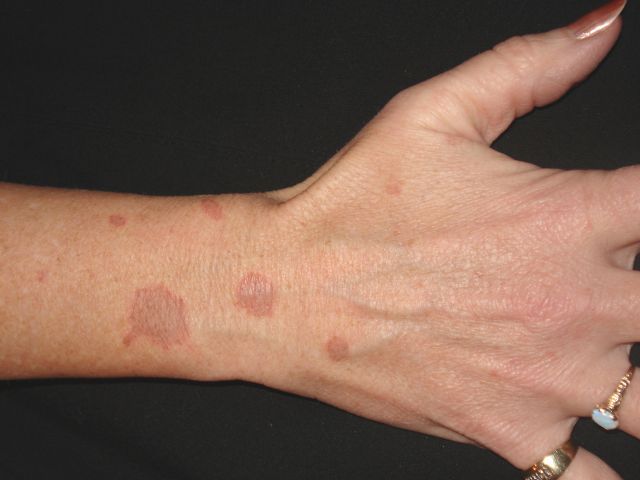- Clinical Technology
- Adult Immunization
- Hepatology
- Pediatric Immunization
- Screening
- Psychiatry
- Allergy
- Women's Health
- Cardiology
- Pediatrics
- Dermatology
- Endocrinology
- Pain Management
- Gastroenterology
- Infectious Disease
- Obesity Medicine
- Rheumatology
- Nephrology
- Neurology
- Pulmonology
What Are These Lesions?
These circular, erythematous lesions of varying sizes on a 45-year-old woman’s dorsal right hand and extensor surface of the right forearm are


ANSWER:
These circular, erythematous lesions of varying sizes on a 45-year-old woman’s dorsal right hand and extensor surface of the right forearm are grease burns. The injury occurred when the patient lifted a pan that contained hot cooking oil in which she had been searing meat.
Second only to hot water burns, grease burns represent 10.4% of all major burns and 8.2% of all minor burns seen in the emergency department.1 The most common scenario is when hot grease splatters onto the hand of a cook who moves a pan in which grease has ignited. The burn is usually full-thickness (third-degree) because of the high temperature of the grease. Water at atmospheric pressure can be heated to 100°C, whereas grease can attain temperatures above 200°C. In addition, the greater viscosity of grease allows it to cling to skin and cause significant tissue damage. The splatter pattern of the lesions represents the clinging grease droplets.2
Most patients who present with full-thickness grease burns are treated by debridement or excision, followed by the application of wound dressings and a graft, if necessary.3 Although this patient’s lack of sensation at the burn site indicated a full-thickness burn, the affected skin involved a small surface area; thus treatment with a wound dressing was sufficient. The injury healed with minimal scarring.
References:
REFERENCES:
1.
Bill TJ, Bentrem DJ, Drake DB, Edlich RF. Grease burns of the hand: preventable injuries.
J Emerg Med.
1996;14:351-355.
2.
Klein MB, Gibran NS, Emerson D, et al. Patterns of grease burn injury: development of a classification system.
Burns.
2005;31:765-767.
3.
Fiebiger B, Whitmire F, Law E, Still JM. Causes and treatment of burns from grease.
J Burn Care Rehabil.
2004;25:374-376.
